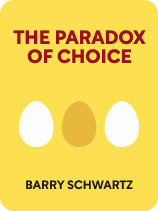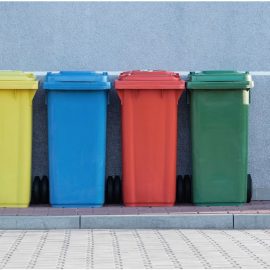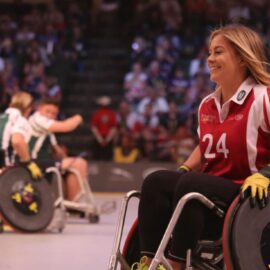

This article is an excerpt from the Shortform book guide to "The Paradox of Choice" by Barry Schwartz. Shortform has the world's best summaries and analyses of books you should be reading.
Like this article? Sign up for a free trial here .
Why do we have difficulty making decisions? What are the most common comparisons we make when making decisions?
One of the biggest factors that makes decision-making difficult is the fact that people have a tendency to compare their choices to the choices of others. There are four common types of comparisons that we use to weigh our decisions, which can make them seem better or worse.
Keep reading to learn about the comparisons we make when making decisions.
Making Decisions
Schwartz posits that one reason we may have difficulty making decisions and feel regret or disappointment in our choices is that we compare them with others’ choices to gauge whether we’re choosing well. Too much comparison, especially social comparison, can lead us to bad judgment in our decision-making.
In this chapter, Schwartz lists common comparisons we make, discusses the effect of high expectations on our comparative decision-making, and describes why social comparison can be one of the most damaging kinds of comparison.
Common Comparisons
Schwartz identifies four common types of comparisons we make in order to judge our decisions:
- We compare the results of our choices against our hoped-for outcomes.
- We compare the results against our expected outcomes.
- We compare the results against our recent experiences.
- We compare the results against others’ experiences.
These comparisons can make our choice seem better or worse, depending on what we’re comparing it to. When our choice seems worse in comparison, we sense gaps between what we wanted and our outcome.
Schwartz cites social scientist Alex Michalos, who identified three types of gaps:
- The gap between what we want and what we have.
- The gap between what our peers have and what we have.
- The gap between the ideal outcomes and experiences of the past and what we have now.
Schwartz also adds a fourth: The gap between what we expect and what we have. He added this gap because he believes many people have become accustomed to high-quality experiences and goods, leading to disappointment when something doesn’t meet our high standards.
The comparisons we make to judge our choices, and the gaps we feel between the outcomes of our choices and alternative outcomes, create regret and stress.
| Closing Professional Gaps Schwartz focuses on how to mitigate the impact of comparison on our thinking, but sometimes these comparisons and gaps can help us acknowledge what we want in our lives: If a choice doesn’t live up to expectations, or we feel that we don’t have what we truly want, we can sometimes take steps to reach what we aim for. Our professional life is an area where we might make comparisons and see gaps. Ways to close the gap between what you want and what you have include taking on stressful tasks instead of avoiding them, prioritizing your work, and holding yourself accountable. |
Neutral Points
Neutral (or reference) points, an aspect of prospect theory discussed in Chapter 3, shape how we make comparisons, potentially causing disappointment.
Schwartz explains that when we make comparisons, we use neutral points to guide our decisions: They can be past experiences, imagined outcomes, others’ experiences, and so on. However, these points of comparison are anything but neutral. For instance, if we set an unrealistic neutral point, we might be disappointed with the experience we have.
Remember the example of James, who was shopping for a sweater? He was looking for a sweater that was $20 or less, because $20 was the reference point he had set. Another shopper might have a reference point of $50, or $100, depending on their income and the quality of sweaters they’re used to buying. James would be disappointed if he could only find sweaters that were over $35, but the shopper used to $100 sweaters would be thrilled if he found a $35 sweater he was happy with.
As explained earlier, reference points are different for different people, so disappointment stemming from this comparison is subjective.
| Thinking, Fast and Slow and Reference Points In Thinking, Fast and Slow, Kahneman elaborates on how reference points factor into the way we choose subjectively among alternatives (prospect theory). The endowment effect, or the sense that something is “yours” even if you’ve only had it for a short time, creates new reference points: You quickly get used to the idea of owning something, and the fact of your ownership becomes your new reference point. This is why it feels like a loss to give up something that you’ve had for even a brief time. Similarly, when we set goals, they become reference points—even when they’re arbitrary. Because of this, we feel that we’ve gained something when we reach a goal, and we feel that we’ve lost something when we miss the goal. Kahneman acknowledges the inherent bias and unreliability of reference points, yet he also underscores that reference points affect the way we all live our lives and make decisions. So when making choices, keep in mind that you’re likely comparing your options against a reference point that may or may not be helpful. |
How Expanded Choice Complicates Decision-Making
We’ve discussed how numerous psychological biases make choices challenging. Schwartz describes three major ways that expanded choice adds to the challenge:
1. More options means more effortful choices. When there are more choices to make, and more options to choose from in each given choice, the time and energy it takes to make an informed decision dramatically increases.
(Shortform note: Effortful choices lead to decision fatigue. Signs that you’re dealing with decision fatigue include procrastination, impulsive decisions, indecision, and avoidance. If you’re experiencing decision fatigue, try taking some time to rest before making decisions, making a list of decisions in order of priority, and asking people you trust for their input.)
2. With too many choices in front of us, it’s easy to make bad decisions. When too many choices demand our attention, we can’t carefully consider each choice, so we’re more likely to make bad choices.
This might not matter when choosing what to make for dinner or what TV show to watch. But there can be long-lasting consequences if you don’t take the time to make decisions in more important areas. For instance, if you buy a used car without adequate thought, you could end up driving an unsafe vehicle.
(Shortform note: Research shows that it’s particularly easy to make a bad decision when you’re in an anxiety-inducing situation, or the decision has the potential to be rewarding. For example, you may be more likely to make a bad choice at work if you’re overwhelmed by your job, and you might be more likely to make a bad choice about a romantic partner if you find that person exciting and attractive. If you’re struggling with a decision, try asking yourself these questions to prevent a negative outcome: 1) What’s the worst thing that could happen?, and 2) How would I feel if the worst did happen?)
3. Since having more choices is more stressful, the psychological consequences of a bad choice can be more severe. We all make choices that don’t turn out the way we expect. But when you spend a lot of time making a choice and it turns out badly, you’ll probably feel worse than if you’d chosen quickly.
Schwartz contends that because of the difficulties and pitfalls of facing too many choices, many people fall into a particular bad habit: making most of their choices indiscriminately, without considering options or consequences. People who make decisions in this haphazard way can be called “guessers,” while those who generally think through their decisions are “deliberators.”Everyone has to “guess” and “deliberate” sometimes, but habitual guessing leads to habitual bad decisions.
| Choice and System 2 Thinking Schwartz’s description of guessers and deliberators echoes the two types of thinking Kahneman describes. System 1 thinking is automatic, while System 2 involves conscious thought—so when we guess we use System 1 thinking, and when we deliberate we use System 2 thinking. These systems help explain how the psychological difficulties caused by expanded choice get in the way of effective decision-making. System 2 thinking weakens when we feel overwhelmed, stressed, or tired, and we then use System 1 judgments to a greater extent—and since cognitive biases are an effect of System 1 thinking, this can cause us problems. Expanded choice, then, can cause us to make poor decisions because it exhausts our System 2 thinking. |

———End of Preview———
Like what you just read? Read the rest of the world's best book summary and analysis of Barry Schwartz's "The Paradox of Choice" at Shortform .
Here's what you'll find in our full The Paradox of Choice summary :
- Why the more choices we have, the more stressed and indecisive we feel
- How to better navigate our choices, from groceries to health insurance
- Whether it's better to seek the best or accept "good enough"






